1. Definitions
1.1. coagulation
1.2. fibrinolysis
1.3. thrombosis
1.4. DVT
1.5. embolus
1.6. arterial thromboembolism
2. Causes of thrombosis
2.1. atherosclerosis
2.2. cancer
2.2.1. leukemia
2.2.2. lung
2.2.3. breast
2.2.4. prostate
2.2.5. pancreas
2.2.6. stomach
2.2.7. colon
2.3. high homocysteine levels
2.4. estrogen containing contraceptives
2.5. infection
2.6. stasis
3. anticoagulants
3.1. heparin
3.1.1. 15000 Da
3.1.2. derived from animal tissues
3.1.3. Not absorbed in the GI (given parenterally)
3.1.4. immediate onset of action
3.1.5. action
3.1.5.1. activates antithrombin III
3.1.5.1.1. inactivates coagulation enzyme thrombin (factor IIa)
3.1.5.1.2. inhibits factor Xa
3.1.5.2. inhibit platelet aggregation (only high doses)
3.1.6. adverse effects
3.1.6.1. main
3.1.6.1.1. bleeding
3.1.6.1.2. thrombocytopenia
3.1.6.2. after several days
3.1.6.2.1. alopecia
3.1.6.2.2. skin necrosis at the site of SC injection
3.1.6.3. after 3 months
3.1.6.3.1. osteoporosis
3.1.6.3.2. diminished renal function
3.1.6.4. hypersensitivity
3.1.6.5. can cause hypoaldosteronism
3.1.7. Drug interactions
3.1.7.1. cautiously used with drugs that alters coagulation or platelet function
3.1.7.1.1. aspirin
3.1.7.1.2. phenylbutazone
3.1.7.1.3. dipyridamole
3.1.7.1.4. warfarin
3.1.7.2. antagonize the actions of
3.1.7.2.1. corticosteroids
3.1.7.2.2. insuline
3.1.7.2.3. ACTH
3.1.7.3. increase plasma levels of diazepam
3.1.7.4. some drugs may counteract it's action
3.1.7.4.1. antihistamins
3.1.7.4.2. intravenous nitroglycerin
3.1.7.4.3. propylene glycol
3.1.7.4.4. digoxin
3.1.7.4.5. tetracyclines
3.1.8. Therapeutic uses
3.1.8.1. prevention and treatment of DVT and PE
3.1.8.2. prevention and treatment of thrombosis after MI
3.1.8.3. used in postoperative to prevent thrombosis and PE
3.2. LMWHs
3.2.1. derived from animal tissues
3.2.2. short fragment heparin
3.2.3. 1000 - 10000 Da
3.2.4. Not absorbed in the GI (given parenterally)
3.2.5. immediate onset of action
3.2.6. action
3.2.6.1. activates antithrombin III
3.2.6.1.1. inhibits factor Xa
3.2.6.2. has reduced ability to bind to plasma proteins
3.2.6.2.1. thus pharmacological effect are more predictable
3.2.7. advantages over heparin
3.2.7.1. better bioavailability
3.2.7.2. longer duration of action
3.2.7.3. predictable plasma levels
3.2.7.4. lower risk of bleeding and osteoporosis
3.2.7.5. loser incidence of thrombocytopenia
3.2.8. examples
3.2.8.1. enoxaparin
3.2.8.2. tinzaparin
3.2.8.3. deltaparin
3.3. fondaparinux
3.3.1. 1500 Da
3.3.2. Synthetic analog of heparin
3.3.3. otherwise it's the same as LMWHs
3.4. warfarin
3.4.1. most wildly prescribed oral anticoagulant
3.4.2. action
3.4.2.1. interfering with synthesis of v.K dependent clotting factors in the liver
3.4.2.1.1. each factor is decreased 30-50% by the therapeutic dose of warfarin
3.4.3. kinetics
3.4.3.1. bioavailability is 100% orally or rectally
3.4.3.2. slow onset of action (1-3 days)
3.4.3.3. response is measured by prothrombin time PT
3.4.3.4. PT returns normal after 5-7 days
3.4.3.5. metabolized by CYP2C9
3.4.4. adverse effects
3.4.4.1. hemorrhage
3.4.4.2. allergic reactions
3.4.4.3. GIT disturbance
3.4.4.4. teratogenicity
3.4.5. drug interactions
3.4.5.1. V.K1 oxide is used as specific antidote
3.4.5.2. NSAIDs increase the risk of bleeding
3.4.5.3. hepatic enzyme inhibitors increase plasma levels of warfarin
3.4.5.3.1. cimetidine
3.4.5.3.2. chloramphenicol
3.4.5.3.3. metronidazole
3.4.5.4. hepatic enzymes inducers increase the metabolism of warfarin
3.4.5.4.1. rifampicin
3.4.5.4.2. griseofulvin
3.4.5.5. less absorption with cholestyramine
3.4.6. miscellaneous agents
3.4.6.1. phenprocoumon
3.4.6.2. acenocumarol
3.4.6.3. dicoumoral
3.4.6.4. dabigatran etexilate
3.4.6.4.1. converted to dabigatran
4. antiplatlet
4.1. prostaglandin synthesis inhibitors
4.1.1. example: aspirin
4.1.2. irreversibly inhibit COX-1
4.1.3. effect lasts 7-10 days (new platelets)
4.1.4. 75 mg/day is enough
4.1.5. reduces incidence of stroke and MI
4.2. phosphodiesterase inhibitor
4.2.1. Dipyridamole
4.2.2. inhibit platelet aggregation by increasing activity of PGI2
4.2.3. similar effect to aspirin but no risk of bleeding
4.3. ADP antagonists
4.3.1. ticlopidine and clopidogrel
4.3.2. antagonists of ADP on P2Y12 and prevent platelet aggregation
4.3.3. ticlopidine is largely replaced with clopidogrel because it causes TTP
4.3.4. usual dose is 75mg/day
4.4. glycoprotein receptor antagonist
4.4.1. Abciximab
4.4.2. glycoprotein IIb/IIIa receptor antagonist
4.4.3. used to prevent platelet aggregation during and after coronary artery procedures
4.4.4. has short half-life
4.4.5. strong affinity
5. thrombolytic (fibrinolytic) agents
5.1. mechanism
5.1.1. activating plasminogen
5.1.1.1. formation of plasmin
5.1.1.1.1. dissolving the fibrin mesh
5.2. adverse effects
5.2.1. hemorrhage
5.2.2. antigen
5.2.2.1. fever
5.2.2.2. skin rashes
5.2.2.3. rarely anaphylactic reactions
5.3. examples
5.3.1. streptokinase
5.3.2. urokinase
5.3.3. tissue plasminogen activator (t-PA)
